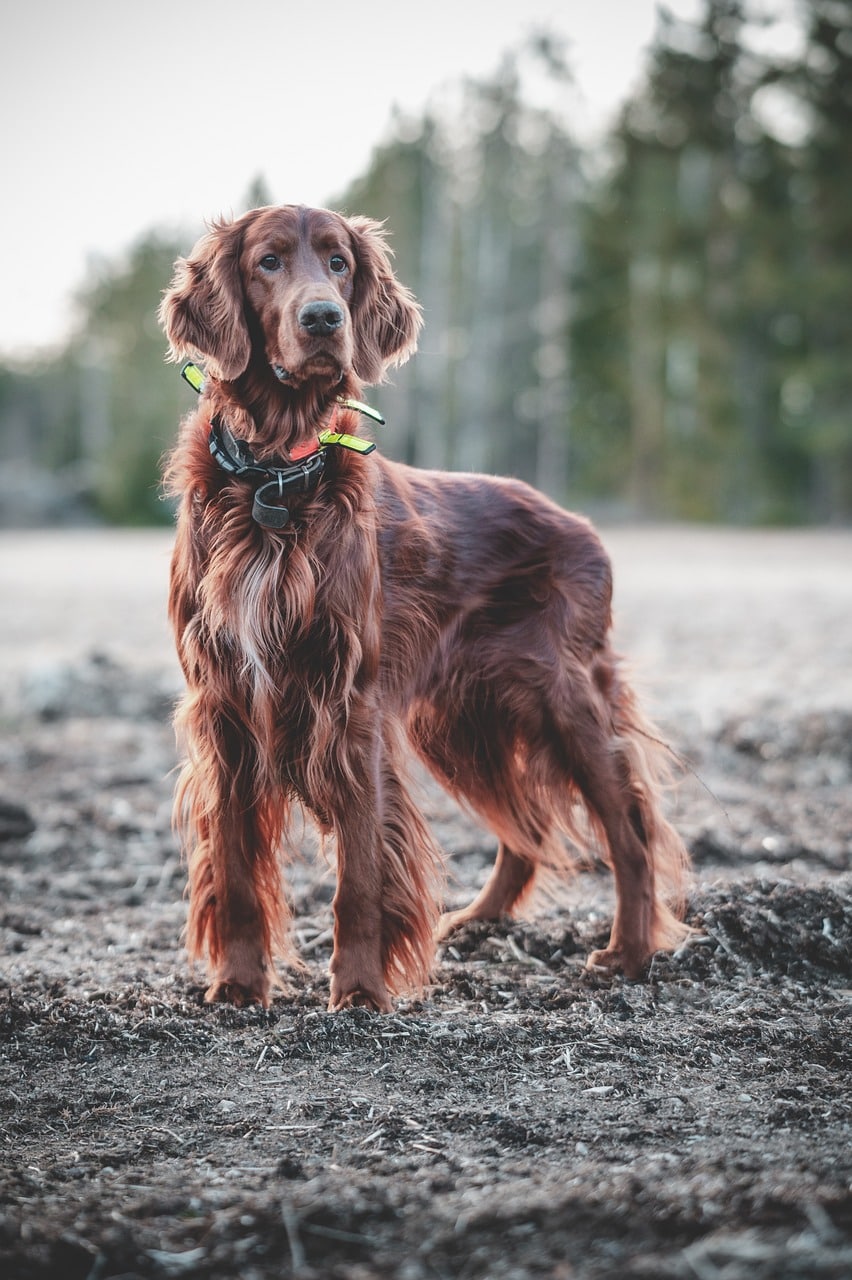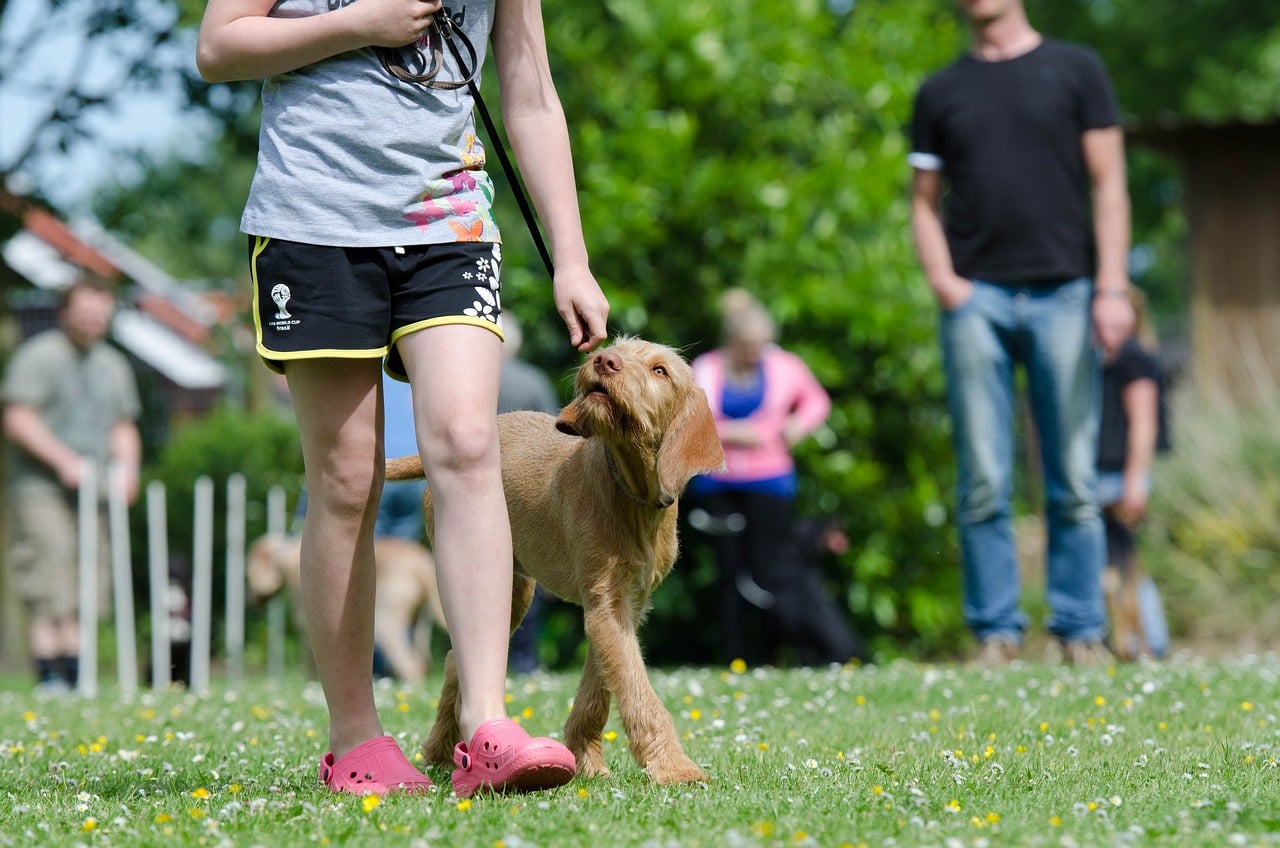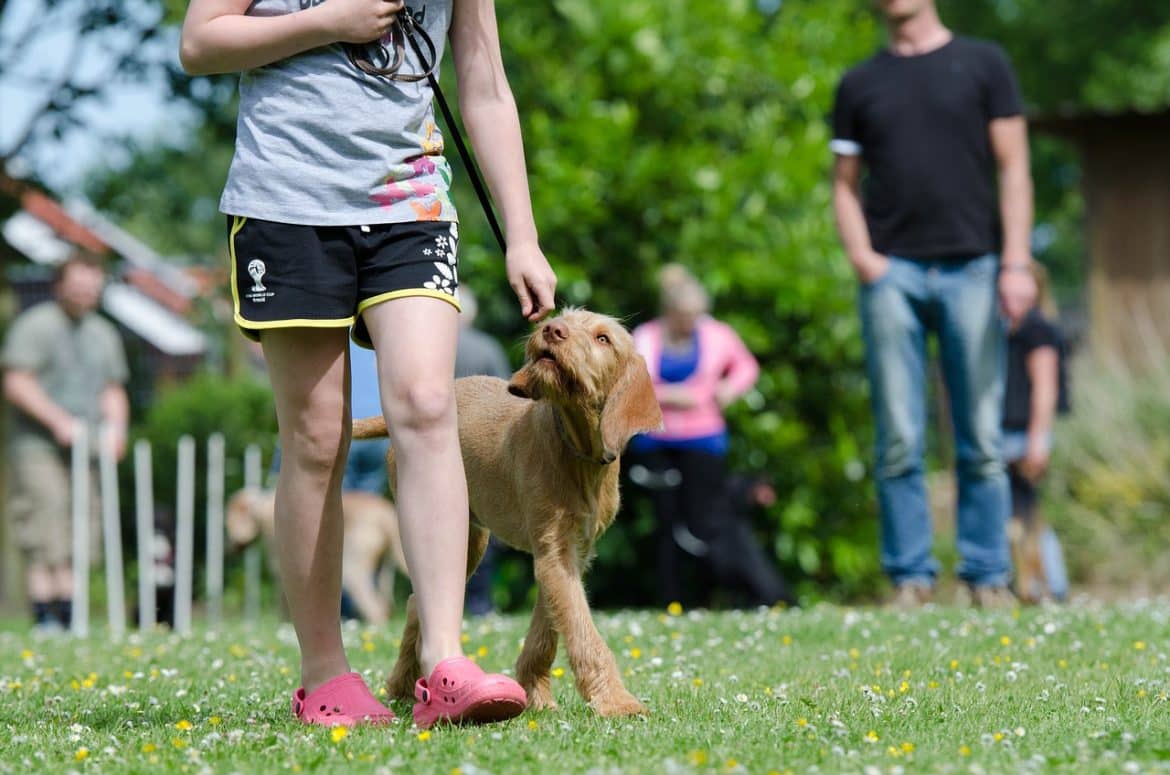Is your furry friend driving you crazy with their nonstop whining? Don't fret! In this article, you will discover a variety of effective techniques to calm your excessively whining dog. From understanding the root cause of their whining to implementing positive reinforcement methods, these simple yet powerful strategies will help bring peace and tranquility back into your home. Get ready to create a harmonious environment for both you and your beloved pet!

This image is property of pixabay.com.
Identifying the Cause of Whining
Whining can be a frustrating behavior for both you and your dog. However, before you can effectively address the issue, it is important to identify the cause behind your dog's whining. Understanding the different types of whining can help you determine why your dog is exhibiting this behavior.
Understanding the different types of whining
Dogs can whine for various reasons, and it is essential to differentiate between different types of whining. Some common types of whining include attention-seeking whining, whining due to discomfort or anxiety, and whining as a result of being bored or wanting something. By understanding the specific type of whining, you can better address the underlying cause.
Recognizing signs of discomfort or anxiety
Whining can often be a sign that your dog is experiencing discomfort or anxiety. It is important to pay attention to other signs and behaviors that accompany the whining. These may include pacing, trembling, panting, or restlessness. If you notice these signs, your dog may be trying to communicate distress or fear, and it is crucial to address these underlying emotions.
Taking note of environmental triggers
Environmental triggers can play a significant role in causing a dog to whine excessively. These triggers may include loud noises, unfamiliar surroundings, or changes in routine. By identifying these triggers, you can take steps to either avoid them or gradually desensitize your dog to them.
Consulting a veterinarian for underlying medical issues
If your dog's whining persists despite your efforts to address it, it is essential to rule out any underlying medical issues. Pain, discomfort, or medical conditions can contribute to whining behavior. Consulting with a veterinarian can help identify and address any potential health concerns.
Creating a Calming Environment
One effective way to help calm an excessively whining dog is by creating a calming environment. Providing a quiet and safe space for your dog can help them feel secure and reduce anxiety.
Providing a quiet and safe space for the dog
Designating a specific area in your home where your dog feels safe and comfortable can be incredibly beneficial. This space can be a quiet corner, a cozy crate, or a dedicated room. Make sure the area is free from distractions, loud noises, and excessive foot traffic.
Using calming aromatherapy
Certain scents can have a calming effect on dogs. Consider using calming aromatherapy in your dog's designated space. Lavender, chamomile, and valerian are known for their soothing properties. However, it is important to ensure that the chosen aromatherapy products are safe for use around dogs.
Playing soothing music or white noise
Music therapy can help create a calming environment for your dog. Playing soft, soothing music or white noise can help drown out external noises and promote relaxation. There are even specially curated playlists designed specifically for dogs available online.
Utilizing dim lighting or a cozy crate
Dimming the lights in your dog's designated space can help create a more calming ambiance. Additionally, if your dog feels safe and secure in a crate, providing them with a cozy crate can serve as a comforting retreat. Make sure the crate is properly sized and equipped with a comfortable bed or blankets.
Establishing a Consistent Routine
Dogs thrive on routine and structure. Establishing a consistent routine can help reduce anxiety and create a sense of predictability for your dog.
Setting regular feeding and exercise schedules
Consistency in feeding and exercise routines can provide a sense of security for your dog. Establish specific times for meals and exercise, and try to stick to these schedules as much as possible. This will not only help regulate their physical needs but also contribute to their overall well-being.
Ensuring ample physical and mental stimulation
A bored or under-stimulated dog is more likely to exhibit whining behavior. Providing sufficient physical and mental stimulation through games, puzzle toys, and interactive activities can help reduce anxiety and keep your dog engaged. Engaging in activities such as obedience training, agility, or scent work can also help tire your dog mentally and physically.
Maintaining a structured daily routine
In addition to feeding and exercise schedules, maintaining a structured daily routine can help your dog feel secure and reduce anxiety. Consistency in waking up, bedtime, and daily activities can provide your dog with a clear understanding of what to expect, minimizing stress and whining.
Implementing positive reinforcement training
Positive reinforcement training is a highly effective method to teach your dog desired behaviors while reinforcing a calm and relaxed state. Reward your dog with treats, praises, or toys when they exhibit calm behavior instead of whining. This technique encourages positive behavior and can help redirect your dog's focus.
Teaching Relaxation Techniques
Teaching your dog relaxation techniques can be an excellent way to combat excessive whining. These techniques promote calmness and teach your dog to self-soothe in stressful situations.
Practicing deep breathing exercises with the dog
Deep breathing exercises are not only beneficial for humans but can also help relax dogs. Encourage your dog to lie down comfortably beside you and take slow, deep breaths. As you take deep breaths, gently stroke your dog's fur to help them relax. This exercise can help both you and your dog achieve a more serene state.
Introducing progressive muscle relaxation
Progressive muscle relaxation involves systematically tensing and relaxing muscle groups to promote relaxation. Start by gently massaging your dog's body, focusing on each muscle group. Begin with the paws and gradually move up to the neck and head. This technique can help your dog release tension and reduce anxiety.
Teaching the dog to settle on a designated mat
Designating a specific mat or bed as a "relaxation spot" can help your dog associate that area with calmness and relaxation. Training your dog to settle on the mat by reinforcing them with treats and praise can help redirect their energy and relieve anxiety.
Using gentle massage or TTouch techniques
Massage and TTouch (Tellington Touch) are techniques that involve gentle touches and manipulations on specific parts of your dog's body. These techniques can help alleviate stress, promote relaxation, and provide a calming effect on your dog. Consult with a professional trainer or practitioner to learn these techniques properly.

This image is property of pixabay.com.
Addressing Separation Anxiety
Separation anxiety is a common issue that can cause dogs to whine excessively when left alone. It is crucial to address this issue appropriately to help your dog feel more secure and reduce their anxiety.
Gradually desensitizing the dog to departures
Start by desensitizing your dog to your departures. Practice leaving the house for short periods and gradually increase the duration. By doing this, you are helping your dog realize that your departures are not permanent and that you will return.
Implementing counterconditioning techniques
Counterconditioning involves creating positive associations with situations that trigger anxiety or distress. For example, you can give your dog a special treat or engaging toy whenever you leave the house. This helps your dog form positive emotions associated with your absence.
Using interactive puzzle toys to alleviate anxiety
Engage your dog's mind and alleviate anxiety by providing interactive puzzle toys. These toys can keep your dog mentally stimulated and provide a distraction during your absence. Fill the toys with treats or food, encouraging your dog to focus on the rewarding task rather than becoming anxious.
Seeking professional help if severe separation anxiety persists
If your dog's separation anxiety persists and continues to cause distress, it is essential to seek professional help. A certified dog trainer or a veterinary behaviorist can assess the severity of the separation anxiety and provide you with effective strategies and potential medications to address the issue.
Utilizing Distraction and Engagement
Distraction and engagement techniques can redirect your dog's focus away from whining behavior and towards more positive and stimulating activities.
Providing interactive toys or treat puzzles
Interactive toys and treat puzzles can keep your dog entertained and mentally engaged. These toys require problem-solving and can provide a healthy outlet for your dog's energy. By redirecting their attention towards these toys, you can help divert their focus from whining.
Engaging in mental stimulation activities
Engaging your dog in mental stimulation activities, such as obedience training or scent work, can help keep their mind occupied. Mental stimulation not only provides a healthy outlet for your dog's energy but also enhances their problem-solving skills and reduces boredom.
Teaching new tricks or commands
Teaching your dog new tricks or commands can be a fun way to distract them from whining behavior. This engages their mind and provides a positive outlet for their energy. By focusing on learning and executing new commands, your dog will have less time and inclination to engage in whining.
Playing games that redirect the dog's focus
Interactive games, such as fetch or hide-and-seek, can redirect your dog's focus away from whining. These games provide physical exercise and mental stimulation while reinforcing the bond between you and your dog. Engaging in regular playtime sessions can help reduce whining behavior.

This image is property of pixabay.com.
Applying Positive Reinforcement Training
Positive reinforcement training is a powerful tool for addressing and modifying undesirable behaviors, including excessive whining. This approach focuses on rewarding desired behaviors rather than punishing or scolding for negative behaviors.
Rewarding calm behavior with treats or praise
When your dog exhibits calm behavior instead of whining, reward them with treats and praises. Positive reinforcement helps reinforce the calm behavior, making it more likely to be repeated. Over time, your dog will associate calmness with positive rewards and be more motivated to exhibit that behavior.
Using clicker training to reinforce quietness
Clicker training is a form of positive reinforcement training that utilizes a clicker to mark desired behaviors. Each time your dog stops whining and remains quiet, use the clicker and follow it up with a treat or praise. This technique helps your dog understand that being quiet is a desirable behavior.
Ignoring whining and rewarding silence
When your dog engages in excessive whining, it is essential to avoid rewarding the behavior with attention or treats. Instead, ignore the whining and wait for a moment of silence. As soon as your dog stops whining, offer praise and treats to reinforce the desirable silence.
Avoiding punishment or negative reinforcement
It is important to refrain from using punishment or negative reinforcement when addressing whining behavior. Punishment can escalate anxiety and fear, leading to more significant behavior issues. Instead, focus on positive reinforcement strategies to encourage calmness and quietness.
Using Desensitization and Counterconditioning
Desensitization and counterconditioning techniques are effective tools for addressing behavioral issues related to fear or anxiety. These techniques gradually expose your dog to triggering stimuli while associating positive experiences with them.
Gradually exposing the dog to triggering stimuli
Identify the specific triggers that cause your dog to whine and gradually expose them to those stimuli. Start with a low-intensity version of the trigger and gradually increase the exposure over time. This gradual approach helps your dog build confidence and develop a positive association with previously stressful situations.
Pairing the stimulus with positive experiences
While exposing your dog to triggering stimuli, make sure to pair the stimulus with positive experiences. For example, if your dog whines when encountering other dogs, gradually introduce controlled and positive interactions with well-behaved dogs. This helps create positive associations with the previously anxiety-inducing stimulus.
Creating a positive association with previously stressful situations
If certain situations or environments consistently cause your dog to whine, it is crucial to create positive associations with these scenarios. This can be done by providing treats, praise, or playtime during these situations. Over time, your dog will learn to associate these situations with positive experiences rather than anxiety or whining.
Seeking professional guidance for effective techniques
Desensitization and counterconditioning require careful planning and implementation. If you are unsure about the best approach or need assistance, it is recommended to seek professional guidance from a certified dog trainer or veterinary behaviorist. They can provide expert advice and develop a personalized plan to effectively address your dog's specific triggers.
Exploring Natural Remedies and Supplements
In addition to behavior modification techniques, natural remedies and supplements may help calm an excessively whining dog. These options can provide additional support in reducing anxiety and promoting relaxation.
Trying calming pheromone diffusers or sprays
Calming pheromone diffusers or sprays mimic the natural pheromones that dogs release when they feel safe and secure. These products can have a calming effect on dogs and help reduce whining behavior. Place the diffusers in the areas where your dog spends the most time or use sprays on their bedding.
Considering herbal supplements like chamomile or valerian
Herbal supplements such as chamomile or valerian are known for their calming properties. These supplements can be found in the form of treats or drops and may help reduce anxiety and whining in dogs. However, it is important to consult with a holistic veterinarian before introducing any supplements to ensure their safety and appropriate dosage.
Exploring CBD oil or other natural remedies
CBD oil has gained popularity as a natural remedy for anxiety in both humans and dogs. It may help alleviate anxiety symptoms and promote a sense of calmness. However, it is crucial to consult with a holistic veterinarian to ensure the use of a high-quality product and determine the appropriate dosage for your dog's specific needs.
Consulting with a holistic veterinarian for guidance
When considering natural remedies or supplements, it is best to consult with a holistic veterinarian. They can provide guidance on safe and effective options based on your dog's individual needs and health history. They can also help you navigate any potential interactions with other medications your dog may be taking.
Seeking Professional Help
If your dog's whining persists despite your efforts to address the issue, it may be necessary to seek professional help. A professional dog trainer or behaviorist can offer valuable insights, guidance, and interventions tailored specifically to your dog's needs.
Consulting a professional dog trainer or behaviorist
A professional dog trainer or behaviorist can assess your dog's behavior, identify any underlying causes, and recommend appropriate techniques to address the excessive whining. They will work closely with you to develop a training plan that suits both you and your dog's needs.
Attending obedience classes or behavior modification sessions
Enrolling your dog in obedience classes or behavior modification sessions can provide a structured environment for learning and addressing unwanted behaviors. These classes offer professional guidance, socialization opportunities, and a chance to collaborate with other dog owners facing similar challenges.
Exploring medications or behavioral therapy options
In severe cases where behavioral interventions alone are not sufficient, medications may be considered as part of the treatment plan. A veterinarian or veterinary behaviorist can recommend appropriate medications, dosages, or referral to a specialist who can provide behavioral therapy options for your dog.
Working with a professional to develop a personalized plan
Every dog is unique, and it is important to have a personalized approach when addressing excessive whining. A professional can help you develop a comprehensive plan that takes into account your dog's specific triggers, behaviors, and needs. They will provide ongoing support and guidance to ensure long-term success.
In conclusion, excessive whining in dogs can be a challenging behavior to address. However, with patience, understanding, and the implementation of appropriate techniques, you can help your furry friend find a sense of calmness and alleviate their whining. Remember, creating a calm environment, establishing a consistent routine, teaching relaxation techniques, addressing separation anxiety, utilizing distraction and engagement, and applying positive reinforcement training are all valuable strategies in your pursuit of a quiet and content canine companion. If necessary, do not hesitate to seek professional help and explore natural remedies and supplements to support your dog's emotional well-being.


